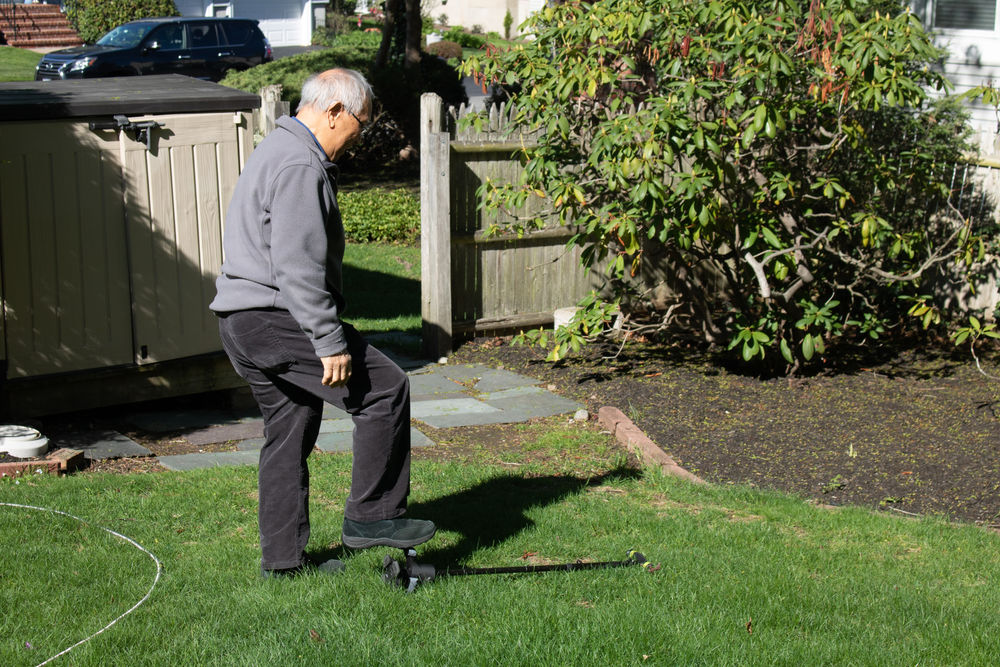
Designing with Harry, for Humanity
Pedtal
Pedtal
Project Type
Industrial Design
Role
Designer, Mechanical engineer
Date
March - May 2020
How can we learn from personal stories and individual experiences to create accessible designs?
Accessibility is often not at the forefront of design, yet all of us experience a need for physical accommodation at some point of life - especially with age. Creating adaptive and accessible tools often improves the quality of life for everyone, not just a small group.
Pedtal is a product that our team designed specifically for and with Harry, our community partner. We learned how to co-design with our clients and battle real world problems involving accessibility and aging.

The Problem
How do people pick up their cane while preventing back pain/strain?
The repeated motion of bending over to pick up items or a fallen cane can cause strain and stress on the back.
Up to 80% of people will experience back pain in their lifetime.


Meet Harry
Our team partnered with Harry to understand his personal experiences with the pains of aging. Together, we brainstormed and codesigned everyday improvements to his life, which brought Pedtal to life.
One new addition to the daily tools in his life is his cane, which he felt hindered by, and he didn't like how it misrepresented him as frail. This contrasted his athletic and active lifestyle, playing many sports and boasting about doing push-ups every day.
A tool by Professor Ela Ben-Ur, we consistently used the Innovation compass to understand our team, Harry, and our project. Our team developed the problem statement and project brief through our relationship with Harry, and this tool helped us discover the deeper needs of the individual.
Which posed the question:
How can we adapt Harry's cane to work with his athleticism rather than against it?




These are proposed solutions, along with those that didn't make it. They were designed to boost mobility and bring speed, but Harry had an averse reaction, saying:
"I don't want a crutch"
"it stands out too much"
Most cane bases are designed to stay up and not fall over, but doesn't address what to do when mistakes eventually happen.
"I like this one because I can use it"

1. Cane falls

2. Step on Cane base

3. Retrieve Cane
Core needs

Easy on the back
We wanted to reduce unnecessary back strain and discomfort that happens when people lean over to pick up their cane off the ground.


Subtle
Harry doesn't want his cane to stand out
Balance
Harry likes to boast his athletic ability.
.png)
Removable
Ease of access for cleaning.
Process


Concept Ideation
Prototyping & Iteration






Design Features
-
Subtle exterior design
-
Reinforced high-stress points
-
Built in hinge for easy install and removal
-
Rubber contact points for grip
-
Foam interior for controlled movements and multi-cane adaptability
-
Three-legged design allows for easy access to "pedals"
-
Lightweight plastic













